Covering Ground
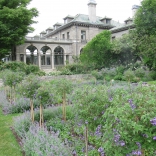 Landscape Variety at Harkness State Park
Landscape Variety at Harkness State Park
Have an hour to spare? Let's take a walk. First, take in the flowering meadows, visit a wildlife preserve, then saunter down the sweeping waterfront lawns. There, catch views of lighthouses and ferry boats. Next, walk the formal gardens, the cutting gardens, and see the new working greenhouse.
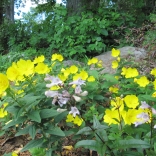 Lake Hayward buffer garden, year two
Lake Hayward buffer garden, year two
I had fun designing and assisting with the installation of a waterside buffer garden at Lake Hayward, East Haddam, CT. In June 2014, the garden was maturing. (See the photos below.) Yarrow and Penstemon (aka Beardstongue) were in full bloom. Both plants have a lot of ecological value. Penstemon is recognized by the Xerces Society as attracting large numbers of native bees.
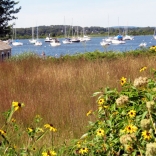 Meadows where lawns once grew?
Meadows where lawns once grew?
Ever hear of meadow-in-a-can? It's a clever marketing idea but so misleading to the serious would-be grower. A wildflower meadow is a special type of growing space, not a place where we toss some seeds and hope for the best.
A meadow isn't a lawn gone wild.
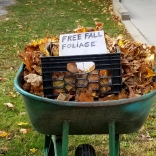 Five ideas to reduce yard work this year
Five ideas to reduce yard work this year
When I meet a new landscape design client, the conversation almost always begins: "I want something really low maintenance."
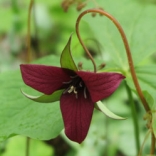 April's wildflowers: Fleeting bright spots in the spring forest
April's wildflowers: Fleeting bright spots in the spring forest
I've heard them called ephemerals. Indeed, they tend to be small, bright, and short-lived. Aside from providing us with a pop of color in the still-brown landscape, spring ephemerals provide sustenance to early insects such as queen bumblebees. Ephemerals sprout in unlikely places, peaking out from beneath leaf litter, between tree roots, along streamsides, and in vernal pools.
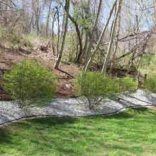 Landscape practices reduce the odds of tick bites
Landscape practices reduce the odds of tick bites
I've talked with people who hesitate to go outside, worried about getting a tick bite. Researchers from the Connecticut Agricultural Experiment Station (CAES) have investigated the problem for years. Here's my 2014 interview with Dr. Kirby Stafford III, a leading tick researcher at CAES. If you have trouble with the link, please download the PDF below.
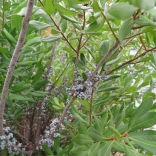 Why we plant winterberries
Why we plant winterberries
Okay, winterberries give us bright colors during a gray time of year. That's reason enough.
But there's another reason. In the first week of April each year, cedar waxwings strip the plants of their long-lasting fruits. The berries are said to be too hard and sour for the birds until about early spring--when most food sources are scarce.
 Understanding seed descriptions
Understanding seed descriptions
They're so small, but not so simple. Seeds seem as though they should be easy to buy, but there is actually a lot to know.
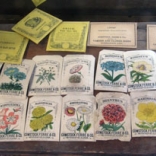 The rich history of Connecticut seed companies
The rich history of Connecticut seed companies
Little did I realize what a deep history Connecticut seed companies had until I began research for "Connecticut’s Long, Rich History of Providing Seed for Growers" for Zip06/The Day. (Download the article at the end of this post.)
For in-depth histories of CT seed companies, visit these links:
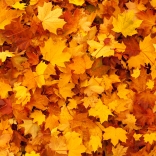 Make the Most of Autumn Leaves
Make the Most of Autumn Leaves
There are two ways of looking at everything, even our famous (or infamous) New England autumn leaf bonanza. Leaf removal is sometimes a big yard job--but it's also a free source of soil fertility. Leaves are important habitat for overwintering insects, reptiles, and amphibians. Leaf piles provide food for overwintering birds.
